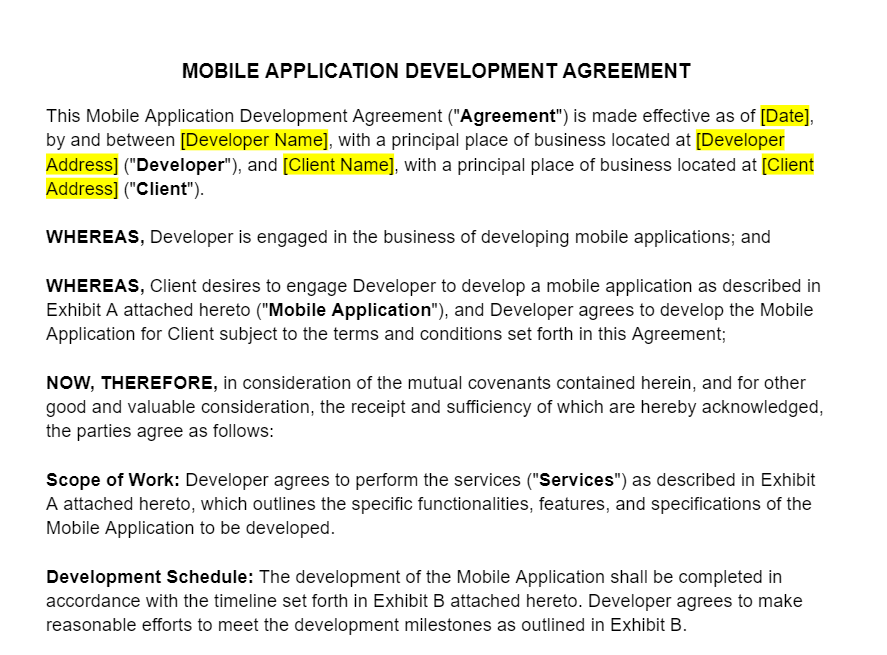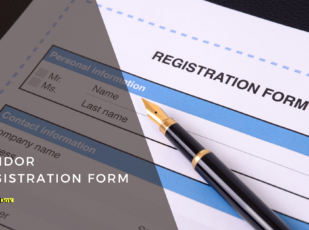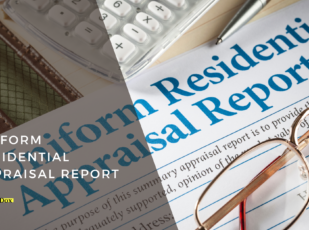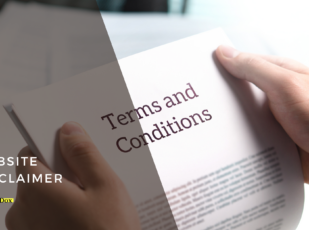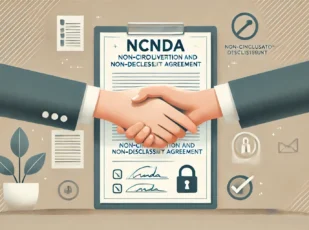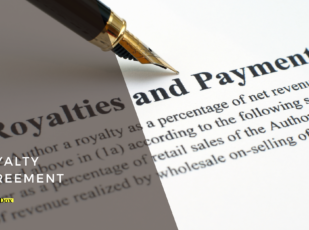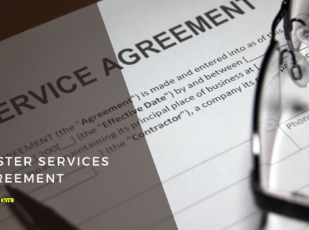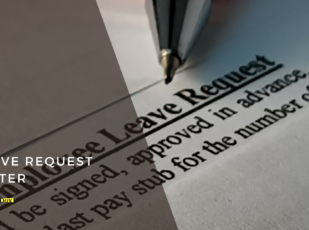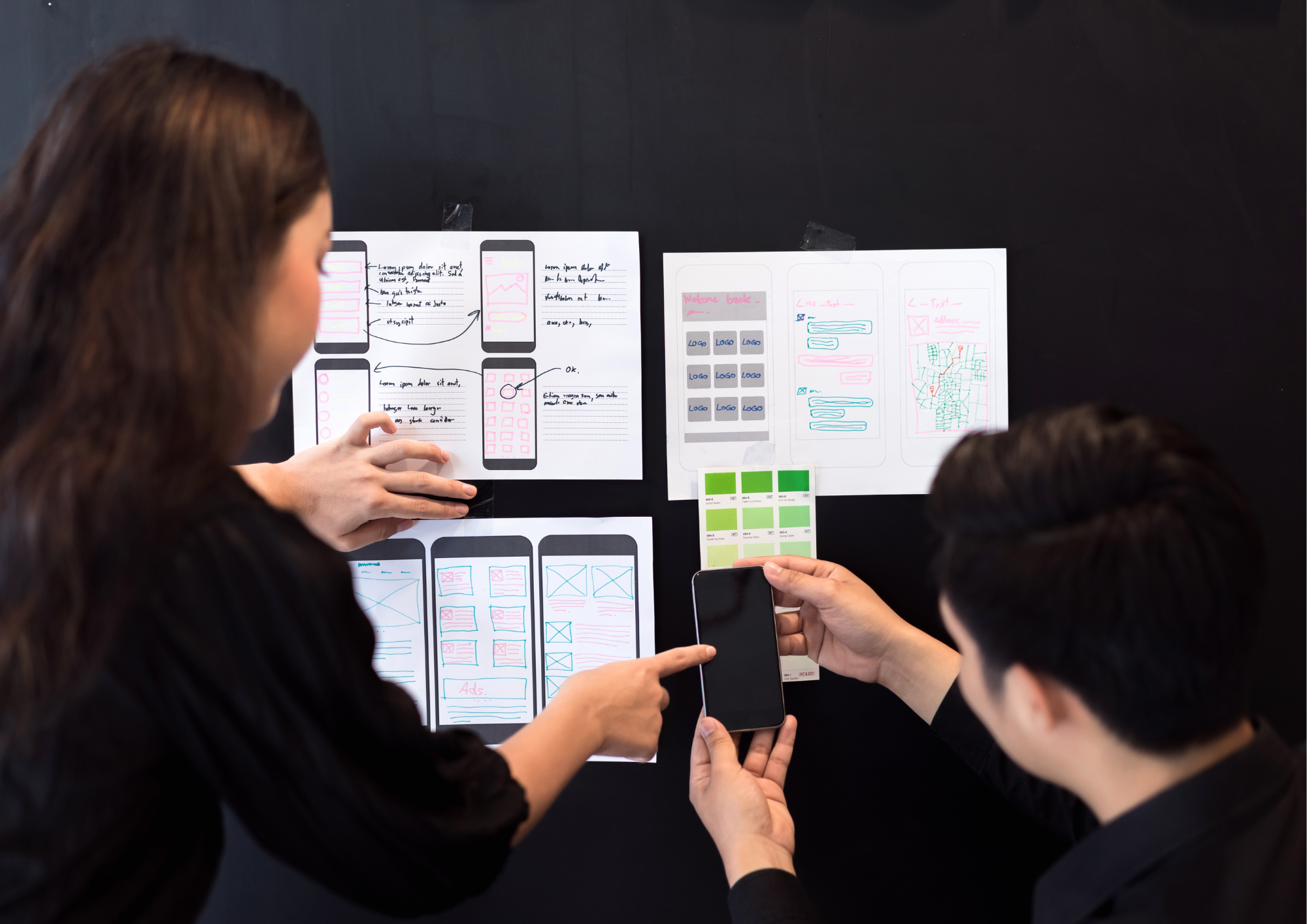
Mobile Application Development Agreement Template
8 Downloads
IT and Media
January 11, 2025
Sayantani Dutta
Mobile technology and smartphone adoption have grown by leaps and bounds over the last few decades. Today, we interact a lot with our phones on a daily basis. But when you really think about it, instead of the core functionalities of the mobile phone itself, we are mainly interacting with several apps. In fact, the modern age and digital content consumption can all be boiled down to mobile applications.
We live in a world driven by innovation and mobile technology is the cornerstone here. Creating mobile apps is not just about surpassing previous technical frontiers, but also about having a mutual understanding between the developers and their clients.
The Mobile Application Development Agreement is an essential tool in this process. It lays the groundwork for successful collaborations by defining the scope, timelines, deliverables, and payment terms of mobile app development projects. It does everything from protecting the client’s intellectual property rights and confidential information to offering indemnification to the developer.
In this article, we are going to take a closer look at the Mobile Application Development Agreement and highlight its critical role in the tech industry. We will also look into the dangers of starting mobile app development projects without a well-formulated, inadequate agreement based on generic templates, before telling you about FreshDox.com’s superior solution—the expertly crafted Mobile Application Development Template. So, without further ado, let’s dive right into it!
What is a Mobile Application Development Agreement?
A Mobile Application Development Agreement is a contract that outlines the terms and conditions under which a mobile app will be developed. It is a legal document signed between a client who requires a mobile application and a developer. The developer can be an individual, freelancer, independent contractor, agency, or software development company.
The idea is to have a comprehensive, legally binding agreement in place that will detail the scope of work. Additionally, it will also outline the responsibilities of both the developer and the client, including the development process, milestones, payment schedules, confidentiality requirements, and rights to the application’s intellectual property.
The terms are stated explicitly in this document under the applicable law. And with that, the agreement ensures that both parties have a clear understanding of their roles and expectations. This, in turn, reduces the likelihood of misunderstandings and disputes throughout the development lifecycle.
Furthermore, the agreement also offers severability to the company and houses clauses for arbitration, termination upon the breach of this agreement, specifics of the developer’s responsibilities, and other agreed-upon considerations for the development services.
Mobile App Development Agreement—Why is it Important?
You cannot begin a project without this agreement. But why is that? Why is a typical contract outlining the scope of work, timelines, and payment terms not enough? Well, as it turns out, without specific warranties, covenants, prior written consent about the rightful usage of any copyrighted material such as trademarks or company branding, and so on, there could be problems down the line—including legal issues.
The entire agreement is specifically developed for mobile applications. Every provision of this agreement is written to protect modern businesses and developers. For example, a typical freelancer contract might skip some form of limitation of liability clause that if the app stops working due to an ongoing update or a security bug, then it is not the developer’s fault. Or, take for example the client’s side. The client’s intellectual property can be used by the developer to work on other, similar projects, eroding the competitive edge they have.
A mobile app development contract has protections against all this. The purpose of designing such an app development-specific contract is to protect both parties—from the IPs and trade secrets of the client to the source code developed by the contractor.
The significance of a Mobile Application Development Agreement lies in its capacity to mitigate risks and create a productive working relationship between developers and clients. All reasonable efforts are taken to protect both parties (such as against force majeure/acts of God events) and indemnify them.
For developers, this agreement acts as a structured framework that outlines the project’s scope. This, in turn, helps manage client expectations and ensure that compensation terms are clearly defined. And on the other hand, the clients get reassurances about the deliverables, project timelines, and the quality of the final product.
What Happens Without a Comprehensive Mobile Application Development Agreement?
Without a robust, legally sound agreement that covers all bases, not only is all intellectual property at risk, but you are also opening yourself up to potential legal disputes under the governing law. The conditions of this agreement make sure that when you are launching an app on app stores, such as the Apple App Store for iOS devices and the Google Play Store for Android devices, there is no material breach of the rights and interests of both parties. If there is any such breach, the clauses for the termination of this agreement are also held within it.
So, venturing into a mobile app development project without a comprehensive agreement poses substantial risks to both developers and clients. In the absence of a formal contract, it is very likely that disagreements over the scope of work, deliverables, timelines, payment terms, etc. will eventually arise, potentially derailing the project itself.
These disputes will fracture the developer-client relationship and can also potentially result in financial losses and legal challenges—especially concerning intellectual property rights and confidentiality breaches. The purposes of this agreement, including each term of this agreement, is to prevent such actions and protect both parties.
Mobile Application Development Agreement: Key Elements
So, what should an ideal, comprehensive Mobile Application Development Agreement have? The exact clauses and conditions will depend on the nature of work and the working arrangement between the client and the developer. But generally speaking, there are seven key components central to any such agreement:
1. Parties Involved
In this section, you will establish the identities of the parties that are entering into the agreement—essentially, the client and the developer. It is critical to list both the legal names and contact details of each party involved.
For developers, this could include individual freelancers, agencies, or software companies. On the client side, it might be a business, corporation, or individual seeking app development services. This section should also clarify the role and scope of each party within the agreement.
It is very important to identify the parties at the outset so everybody knows who they are entering into the contract with. And in the off chance that either party needs to take legal action, this section will provide a clear reference to the individuals or companies involved.
2. Scope of Work
The Scope of Work (SOW) is the heart of the development process. It defines the specific tasks, deliverables, and features of the mobile application to be developed. This section should include:
- Features and Functionality: Detailed descriptions of the app’s core features, such as user authentication, payment integration, geolocation, push notifications, etc.
- Platforms and Devices: Specify which operating systems (iOS, Android) and devices (smartphones, tablets) the app will be developed for.
- Technical Requirements: Any specific technologies or tools to be used in the app development process, such as programming languages, APIs, or databases.
- Development Phases: Breakdown of the project into phases with specific deliverables for each phase (e.g., wireframes, prototype, alpha/beta versions).
Both parties need to be on the same page regarding what is expected. Even the smallest bit of ambiguity or confusion can cause problems that might delay the project or generate bad output. The Scope of Work section, therefore, needs to be extremely detailed. No scope creep, no misunderstandings—only productive work. With a solid SOW section, you are essentially clarifying the features, deadlines, responsibilities, and quality standards.
3. Development Timeline
In this part, the agreement outlines the overall schedule of the project from the initial planning stage to the final delivery. Typically, this section will include the milestones, final deliverable date, and any time adjustments.
- Break down the development into phases with clear deadlines and expectations for each phase. Common milestones include concept design, UI/UX design, alpha testing, and the final delivery.
- You should also have an ultimate deadline by when the completed app is expected to be launched or delivered.
- Time adjustments essentially mean conditions about how time extensions or delays are going to be handled. The exact specifics will depend on the project’s nature and organizational policies. Have clear terms on how time adjustments are to be handled if they result from client feedback, unforeseen technical issues, and third-party dependencies.
4. Payment Terms
Of course, both parties need to be aligned on how and when payments will be made. Ideally, the Mobile Application Development Agreement should have a detailed payment terms section clearly stating the financial details.
These include the total project cost, first of all. This is the agreed-upon price for the development of the mobile app. But that is not all—you also need to outline the specifics of the payment schedule. Are the payments to be made in installments (e.g., upfront, after specific milestones, or upon completion)? Will they be made in phases based on deliverables? Whatever the deal is, it should be clearly stated in the payment terms section.
Also, specify any penalties for delayed payments, such as interest fees or suspension of services and the accepted payment methods. Both the client and the developer need to know their financial obligations. For the client, detailing all this ensures that the work progresses based on agreed-upon payments. And at the same time, the developer is also assured of timely compensation for the work being done.
Some clauses in the payment terms section will also provide a framework for dispute resolution if there are delays in payments or if the project scope changes and necessitates additional payments.
5. Intellectual Property Rights
IP rights are often the most contentious area of any app development project, as it involves the ownership of the code, designs, branding, and any other creative content produced. There are a few key aspects to cover in this section:
- Ownership of Source Code: Who owns the code written for the mobile app—the developer or the client?
- Licensing: If the developer retains ownership of the source code or software components, this clause should define the scope of the license granted to the client to use the app.
- Third-Party IP: If the app uses third-party tools, APIs, or code, this section should clarify who owns that intellectual property and the rights the developer has to use it.
- Confidentiality of IP: Both parties should agree to keep certain proprietary information, such as trade secrets, design elements, and business models, confidential during and after the project.
A well-written IP rights section is pretty much compulsory if the parties wish to protect themselves. If there are no such clauses, needless to say, disputes will most likely arise later on, particularly if either party wants to repurpose or sell the app, use the code for another project, or make changes without the other’s consent.
6. Confidentiality
The confidentiality clauses in a Mobile Application Development Agreement ensure that sensitive information shared between the client and the developer remains protected. This means signing any non-disclosure agreements (NDA) to protect proprietary information—business ideas, app functionality, marketing strategies, etc.
Furthermore, any details about the app, its functionality, or its code should not be shared outside the development team without the client’s consent. This is called “confidentiality during development,” and needs to be enforced within the agreement.
You might also have some post-development confidentiality clauses that you need in the agreement. These clauses continue to be in effect after the project is completed. The objective is to protect the business from competitors who might benefit from the shared information.
Ultimately, the confidentiality clauses offer the much-needed legal safeguard for the client’s intellectual property and business strategies while also protecting the developer from being accused of leaking sensitive information. Solid confidentiality clauses lay the groundwork for a trustworthy, professional collaboration between clients and service providers.
7. Termination Clauses
Lastly, you have the termination clauses. These are conditions under which either party can terminate the agreement before the project is completed. Typically, these clauses cover two types of terminations—cause and convenience.
Termination for cause clauses include situations like one party failing to meet their obligations or breaching the agreement. The other party, in this case, has the full right to terminate the contract. Common examples include a failure to meet deadlines or a breach of confidentiality.
On the other hand, you have termination for convenience clauses. As the name suggests, these clauses set down the terms using which either party may choose to terminate the agreement without any cause. This type of termination often comes with a specific notice period, typically 30 days.
You will also mention what happens after the contract is terminated, such as the return of property, cessation of work, and any outstanding payments due.
The termination clause gives both parties a straightforward way to end the working relationship. Without these clauses, either party could get stuck in a project that no longer serves their interests. For the developer, it outlines what happens if the client does not meet their responsibilities, while the client is assured that they can sever ties if the developer fails to deliver.
Streamlining App Development with FreshDox.com
Looking to draft a legally sound and comprehensive agreement for a mobile app development project? Look no further! Here at FreshDox.com, we have the right solution for you—a professionally designed Mobile Application Development Agreement Template that has been designed to address the unique challenges of app development projects.
Developed by legal experts specializing in this niche, our template ensures that every aspect of the development process is clearly defined, for a smooth and efficient collaboration between developers and clients.
Choosing FreshDox.com gives you access to the M0bile Application Development Agreement Template—but there is more! FreshDox.com is home to a huge catalog of legal, business-related, and professional document templates that you can customize and download in PDF or Word format! Our templates are all drafted by experts and can speed up or smoothen out your project management in a big way.
We also have a 14-day trial period. Using this, you can test our Basic and Premium Membership plans. Basic Members have the ability to download up to three document templates a month while Premium Members have no limits on their downloads. Use this trial period to go through the complexities of app development with confidence, minimize potential disputes, and ensure that the final product meets all expectations.
When you sign up for a FreshDox.com account and download our Mobile Application Development Agreement Template, you are not only simplifying the app development process but also getting peace of mind, knowing that your app projects are underpinned by clear, enforceable legal terms. So, what are you waiting for!? Ensure the success of your mobile application projects today—sign up for FreshDox.com for our comprehensive Mobile Application Development Agreement Template!
Popular searches:
- Mobile Application Development Agreement Template pdf
- Mobile Application Development Agreement Template sample
- Mobile Application Development Agreement Template download
- Mobile Application Development Agreement Template format
- Mobile Application Development Agreement Template template
- Mobile Application Development Agreement Template word
- Mobile Application Development Agreement Template free
Related Templates
Discover more templates that align with your needs and preferences.

Ready to Sign Up?
Sign up for FreshDox.com’s 7-day trial and discover why so many individuals and businesses trust us for their legal document template needs.
- Cancel any time
- 7-day free trial
- From 300+ Customer Reviews

